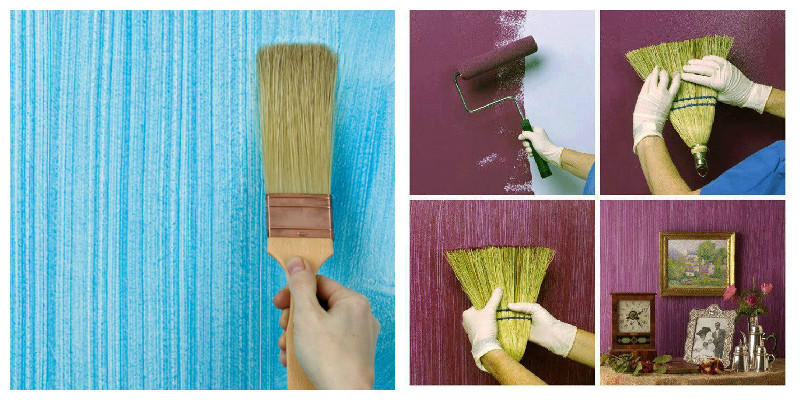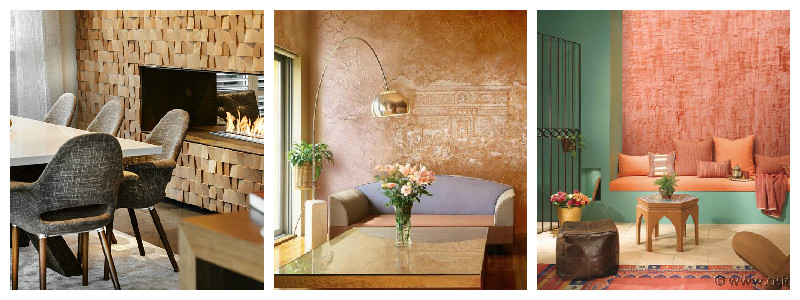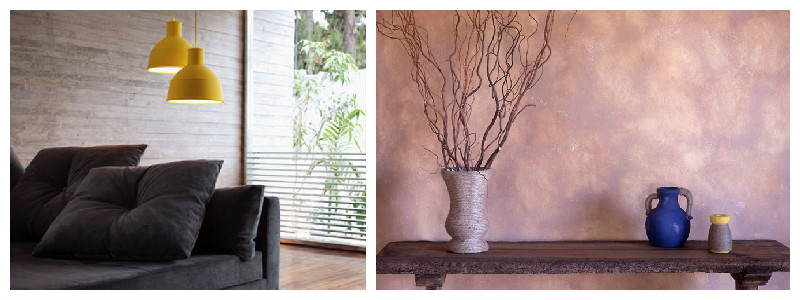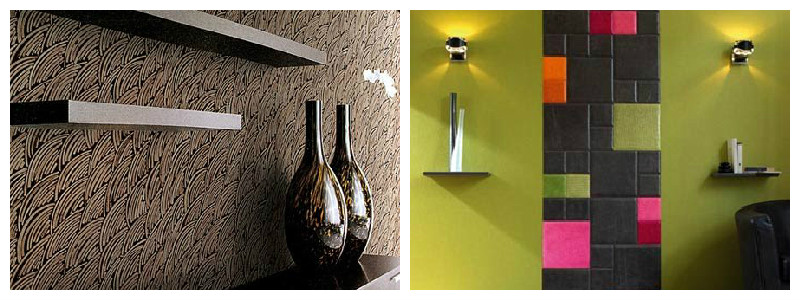We’ve already seen that adding tactile or visual texture to wallcoverings can add a striking and luxurious look to your interior. But when it comes to using this technique, a few things are worth mentioning.
One of the most common methods is the use of textured paint, which creates the look and feel of a canvas, which can then be enhanced by using additional materials like sponges, wood, ribbon, lace, sand, leather, birch and many more. Special tools are used to create texture walls, such as putty knives, brushes, towels, sponges, rollers and combs. Perhaps one of the easiest ways to create a simple and impactful texture in your wall paint is to use a dry brush with hard bristle or even a broom:
Although textured walls do require for extra time and patience, they are very charming and luxurious, guaranteed to get your guests talking. And on the up side you don’t need to make all the walls in your interior textured, as these walls tend to be the high point of attraction in an interior, so you can keep the rest in a complementary, plain design, to make the textured wall the highlight of the room:
If you ask us, textured walls are an effort well rewarded: they add authenticity and personality to the room, allowing you to express your own creativity.













